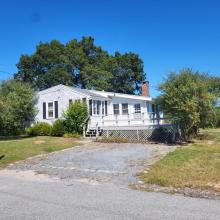Controversial changes to town’s wetland bylaws up for vote at Town Meeting
When voters gather at Decas Elementary on June 12, they’ll be asked to consider two wetland bylaw amendments proposed by Director of Planning Ken Buckland.
The first — Article 10 on the Special Spring Town Meeting warrant — would remove the “No Activity Zone,” which requires a 50-foot buffer between the waterfront and potential developments, for projects in the Wareham Village One zoning district that have “water-dependent uses” or for projects that require “development or alterations of land previously altered with structure.”
The second (Article 11) would make it easier for the town to repair and maintain its roadways and other facilities even in protected wetland areas.
Removing ‘No Activity Zones’ for some projects
The Wareham Village One district stretches from the Tremont Nail Factory property to the British Landing condos. Recently, a few developers have expressed interest in the region — one in the Old Greer Lumber site, two along Merchants Way and one at the Tremont Nail site.
The primary reason for the amendment, Buckland explained, was to clear up confusion among potential developers and project engineers and to reassure them that some waivers for the 50-foot “No Activity Zone” buffer are granted.
Members of the Conservation Commission were displeased that the amendments were being brought to them on short notice, and they were also frustrated that the bylaw was being considered at all. The commission already has the ability to waive the 50 foot “No Activity Zone” for projects, and members didn’t see the need for further clarification on that point.
Despite the pushback, Buckland said the idea behind the bylaw was to make the Wareham Village One zoning district more attractive to developers. He told members of the Conservation Commission that the bylaw amendment would not infringe on their ability to apply wetland protections for proposed projects.
Allow exemptions for public projects
When explaining the second article, Buckland said the amendment to the bylaw would mean “that the exemptions provided by the state law and regulations are available to be applied to municipal projects.” He clarified further, saying that the most important exemptions are the ones that deal with stormwater structures and improvements in wetland resource areas.
The Board of Selectmen clarified the amendment by adding language to specify which municipal projects could be exempt from wetland bylaw restrictions. The new language says all exemptions should be available “to municipal projects relating to replacement, repair and maintenance of existing Town roadways, facilities, installations and fixtures.”
This proposed amendment was also met with confusion and frustration when it was brought before the Conservation Commission for review. Conservation Administrator Dave Pichette said the explanation of the bylaw was misleading. He said the amendment makes it sound like the current bylaw prevents the municipal projects listed, but noted that that’s not the case.
Pichette also said most projects — even municipal infrastructure projects — would require commission review and approval.
“The only thing that’s exempt is for existing structures to be repaired or rebuilt,” he said. “That’s currently something that our own bylaw provides for and allows.”
For that reason, Pichette said he was confused about why the amendment to the bylaw was being proposed. Ultimately, the consensus among commission members was that there hadn’t been enough time to properly review either of the amendments to make recommendations. Now, the choice to adopt the bylaw is left to voters.











